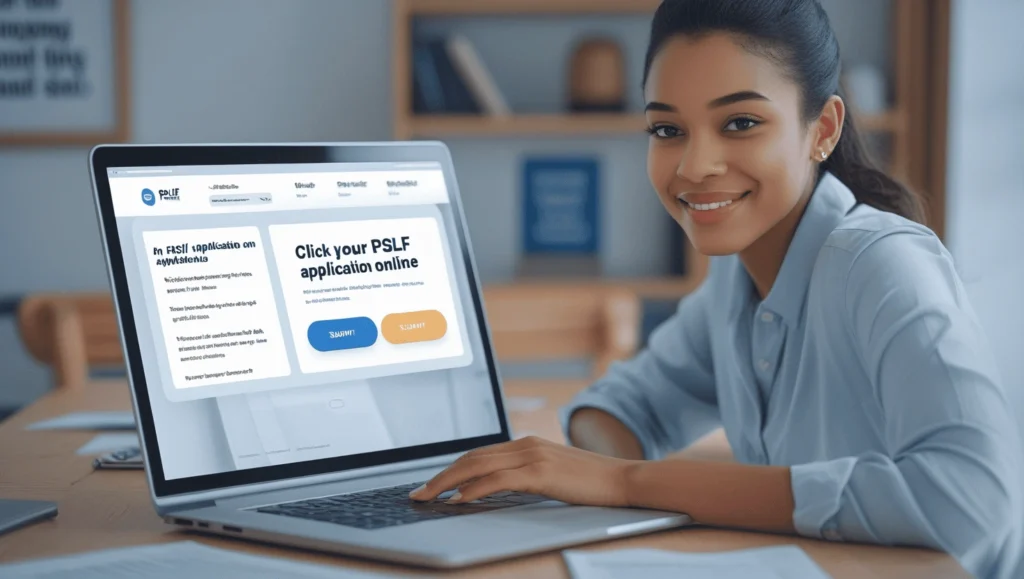1. Understanding the Public Service Loan Forgiveness (PSLF) Program
The Public Service Loan Forgiveness (PSLF) program offers a path to student loan forgiveness for those working in public service. It aims to reduce the financial burden on individuals dedicated to careers that serve their communities, such as teaching, healthcare, and public safety. The program allows eligible borrowers to have their remaining federal student loan balance forgiven after making 120 qualifying payments. To participate, borrowers must meet specific criteria, including working for a qualifying employer, having the right type of loan, and being enrolled in an income-driven repayment plan.
PSLF is one of several student loan forgiveness programs available, but it targets individuals employed in government or non-profit sectors. Understanding how the PSLF program works is essential for those seeking financial relief while contributing to society. This program is designed to incentivize long-term employment in public service fields by offering significant student loan debt relief.
While the process may seem complicated, staying informed about eligibility requirements, qualifying loans, and necessary steps can help you maximize the benefits of PSLF. Regular updates and guidance from official resources, such as StudentAid.gov, are crucial to ensure you stay on track toward loan forgiveness. Exploring all student loan forgiveness programs, including PSLF, can help you find the best option for your financial goals.
What is PSLF?
The Public Service Loan Forgiveness (PSLF) program is designed to support individuals pursuing careers in public service. Its primary goal is to reduce the burden of student loan debt for those dedicated to serving their communities. By offering loan forgiveness, this program incentivizes employment in sectors like government and non-profit organizations.
The core concept of PSLF is simple: eligible public service workers who make consistent, qualifying payments on their federal student loans over a set period can have the remaining balance forgiven. This program provides significant relief for professionals in critical public service roles, such as teachers, healthcare workers, and first responders.
Eligibility Overview
To benefit from the PSLF program, borrowers must meet specific eligibility criteria:
- Employment Requirements: Borrowers must work full-time for a qualifying employer. This includes federal, state, local, or tribal government agencies, as well as non-profit organizations that meet specific qualifications.
- Loan Types: Only Direct Loans are eligible for PSLF. Borrowers with other types of federal loans, such as Federal Family Education Loans (FFEL) or Perkins Loans, must consolidate them into a Direct Loan to qualify.
- Repayment Plans: Participants must be on an income-driven repayment plan (IDR). These plans adjust monthly payments based on income and family size, making them affordable while working in public service roles.
This overview simplifies the program’s requirements. For complete details and updates, visit official government resources like StudentAid.gov. Staying informed is crucial, as rules may change, and accurate information ensures eligibility.
The Public Service Loan Forgiveness program is one of several student loan forgiveness programs available, but it specifically focuses on public service workers. Understanding how PSLF works can help borrowers take advantage of its benefits while fulfilling their professional goals.

2. Qualifying Employment
Types of Qualifying Employers
To qualify for the Public Service Loan Forgiveness (PSLF) program, borrowers must work for specific types of employers. Eligible employers include:
- Government Organizations: This category includes federal, state, local, and tribal government agencies. It also covers public school districts and public colleges or universities.
- Non-Profit Organizations: Borrowers can work for organizations classified as tax-exempt under Section 501(c)(3) of the Internal Revenue Code. These are typically charities, educational institutions, or healthcare organizations.
- Other Non-Profit Employers: Some non-profits that are not 501(c)(3) organizations may still qualify if they provide specific public services. Examples include public health, law enforcement, or public interest legal services.
For non-profit organizations, it is essential to verify their eligibility. You can do this by confirming their primary mission aligns with public service goals. Employers engaged in religious or partisan political activities may have specific restrictions. Borrowers should review detailed guidance from official resources like the Federal Student Aid website.
Full-Time Employment Definition
For the PSLF program, “full-time” is generally defined as working at least 30 hours per week. However, there are specific considerations based on employment type:
- If a borrower works multiple part-time jobs for qualifying employers, the combined hours can meet the full-time threshold.
- For teachers and other professionals with contracts stipulating a fixed number of workdays, the hours are often prorated.
Borrowers should be mindful of potential ambiguities in employment status. For example, if an employer considers a 20-hour workweek “full-time,” it would not meet PSLF requirements. Always clarify employment terms with your Human Resources (HR) department and document these details.
Understanding these requirements is crucial for success in student loan forgiveness programs. For comprehensive details, visit trusted sources like studentaid.gov.

3. Eligible Loan Types
Direct Loans
To qualify for the Public Service Loan Forgiveness (PSLF) program, borrowers must have specific types of Direct Loans. Eligible loans include:
- Direct Subsidized Loans: These are need-based loans where the government covers interest while the borrower is in school or during deferment periods.
- Direct Unsubsidized Loans: Available to all students regardless of financial need, these loans accrue interest from disbursement.
- Direct PLUS Loans: These loans are for graduate students or parents of dependent undergraduates.
- Direct Consolidation Loans: Borrowers who combine multiple federal loans into a single Direct Loan may qualify for PSLF if all other requirements are met.
Common Ineligible Loan Types:
Loans from the Federal Family Education Loan (FFEL) program and Perkins Loans are not directly eligible for PSLF unless they are consolidated into a Direct Loan. Additionally, private student loans do not qualify under any circumstances.
Federal Family Education Loans (FFEL)
FFEL loans were issued by private lenders but backed by the federal government. While these loans are not eligible for PSLF on their own, borrowers can consolidate them into a Direct Consolidation Loan to become eligible.
Steps for FFEL Loan Consolidation:
- Visit the official Federal Student Aid website to start the consolidation process.
- Log in using your Federal Student Aid (FSA) credentials.
- Choose the loans to consolidate, ensuring FFEL loans are included.
- Select an income-driven repayment (IDR) plan as part of the application.
- Review and submit the application for processing.
Why Proper Consolidation Matters:
Consolidation resets your PSLF payment count. This means payments made before consolidation do not count toward the 120 qualifying payments required for forgiveness. However, after consolidation, all subsequent payments under an IDR plan can be credited.
For borrowers with FFEL loans, timely consolidation is crucial to maximizing the benefits of student loan forgiveness programs. Improper consolidation or delaying the process can lead to disqualification or a longer timeline to loan forgiveness.
For more detailed guidance on qualifying loans and the consolidation process, refer to official resources like the U.S. Department of Education’s PSLF page.
4. Making Qualifying Payments
Repayment Plan Requirements
To benefit from the Public Service Loan Forgiveness (PSLF) program, borrowers must be enrolled in an income-driven repayment (IDR) plan. These plans adjust monthly payments based on income and family size, making student loan payments more manageable for public service workers.
Common IDR plans include:
- Income-Based Repayment (IBR): Designed for borrowers with high debt-to-income ratios.
- Pay As You Earn (PAYE): Aims to cap payments at 10% of discretionary income.
- Revised Pay As You Earn (REPAYE): Offers similar benefits to PAYE but applies to more borrowers.
- Income-Contingent Repayment (ICR): Provides flexibility but may result in higher payments compared to other IDR plans.
Being on the correct repayment plan is crucial because only payments made under an IDR plan count toward PSLF. Borrowers can use the Federal Student Aid Loan Simulator to determine the best repayment plan for their situation.
Making Timely Payments
Consistent and on-time payments are vital for PSLF eligibility. Borrowers must make 120 qualifying monthly payments while working for an eligible employer. These payments must meet several criteria:
- Payments must be for the full amount due.
- Payments must be made no later than 15 days after the due date.
- Payments must be made while on an IDR plan and while employed full-time by a qualifying employer.
Late or missed payments can delay eligibility for forgiveness. For example, if a borrower misses a single payment, they will need to make an additional qualifying payment to meet the 120-payment requirement. This could extend the time it takes to achieve forgiveness.
To avoid issues, borrowers are encouraged to set up autopay through their loan servicer. Autopay ensures that payments are made on time, reducing the risk of missing a payment and losing progress toward forgiveness. Keeping records of payment history is also important for resolving any discrepancies with loan servicers.
For more details about repayment plans and making qualifying payments, visit the official Federal Student Aid PSLF page.

5. Applying for PSLF
The PSLF Application Form
Completing and submitting the Public Service Loan Forgiveness (PSLF) application form is a crucial step toward receiving forgiveness for your student loans. This form ensures that your employment and payment history are reviewed for eligibility under the program. It is important to complete the application thoroughly and accurately to avoid delays in processing.
The form is divided into key sections:
- Borrower Information: This section collects your personal details, including name, contact information, and Social Security number.
- Employer Information: Each qualifying employer must complete this section, verifying your employment status, job title, and employment dates.
- Certifications and Signatures: You and your employer must sign to certify that the information provided is accurate.
Submitting this form regularly, ideally once a year or whenever you switch employers, helps track your progress toward PSLF and ensures your qualifying payments are accurately recorded.
For more details, visit the official Federal Student Aid PSLF Program page.
Required Documentation
Providing complete and accurate documentation is vital for a successful PSLF application. Missing or incorrect information could lead to delays or denials. Essential documents include:
- Employment Certification Forms (ECFs): These verify that your employer qualifies under the PSLF program and confirm your full-time employment status.
- Loan Servicer Information: Include details about your federal loan servicer, as they manage your loans and keep records of your payments.
- Payment Records: Maintain a record of all qualifying payments made under an income-driven repayment plan.
Accuracy in documentation is key. Double-check all forms and ensure they are complete before submission. For guidance, consult StudentAid.gov’s PSLF Help Tool.
Applying for forgiveness under the PSLF program requires attention to detail and a proactive approach. By keeping your records updated and submitting forms regularly, you can simplify the process and maximize your chances of success. For more student loan forgiveness programs and additional resources, explore trusted government websites or consult a financial advisor specializing in education loans.
